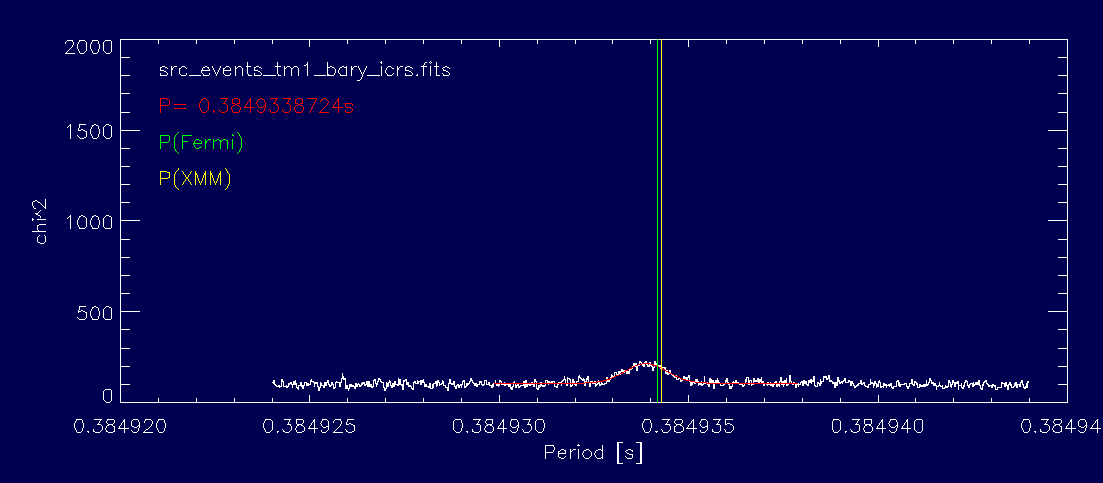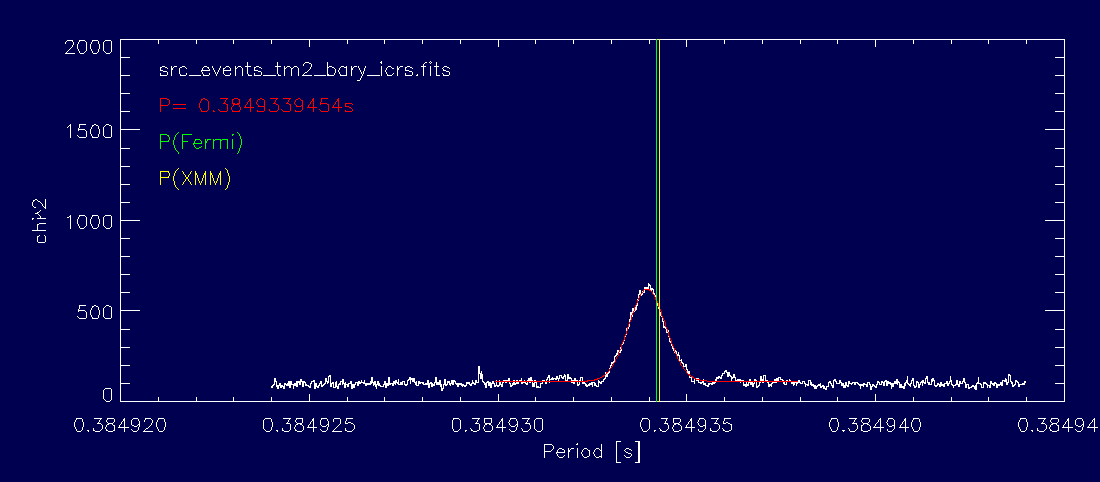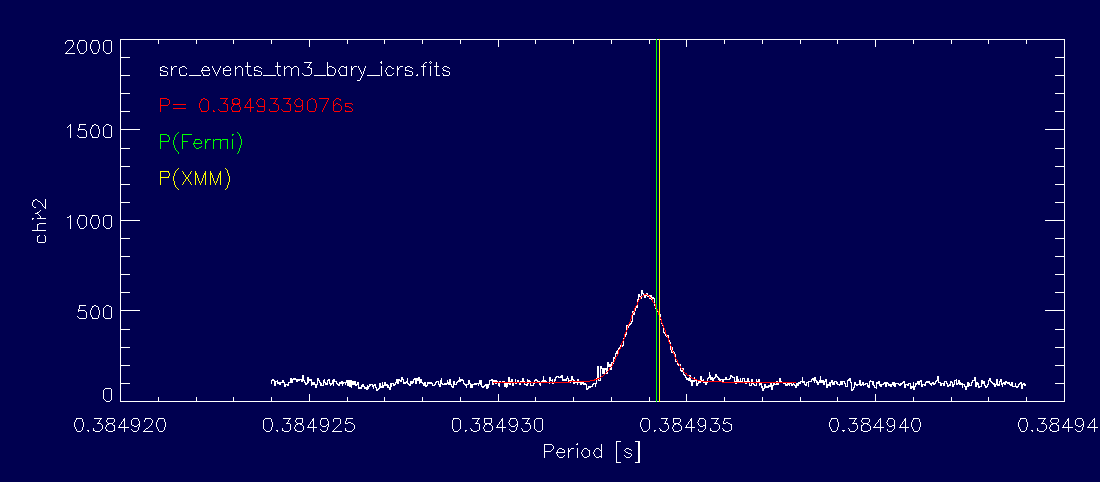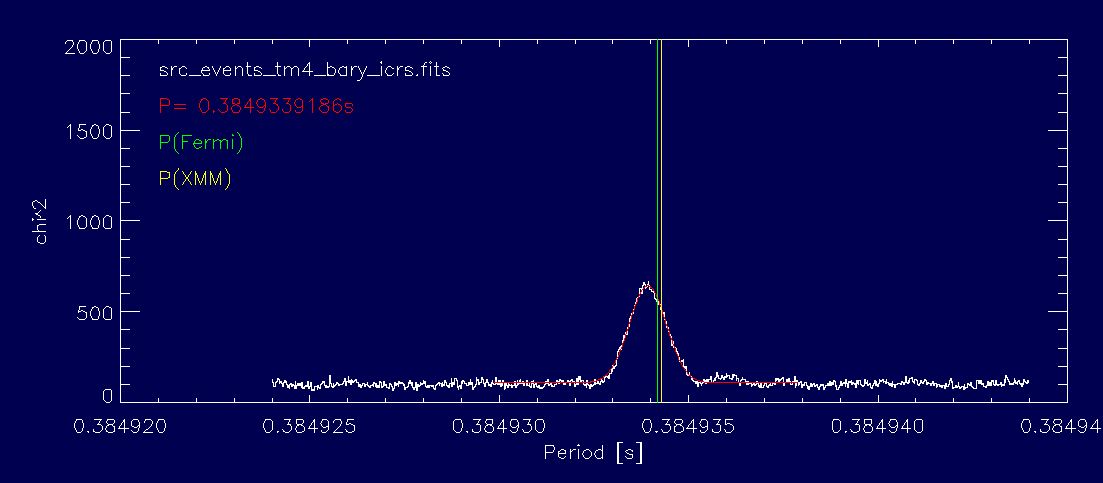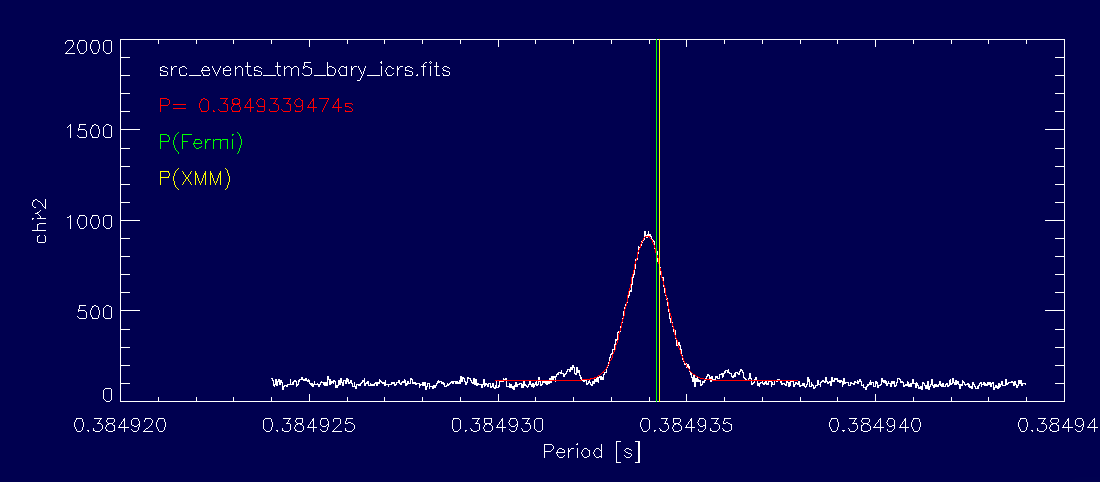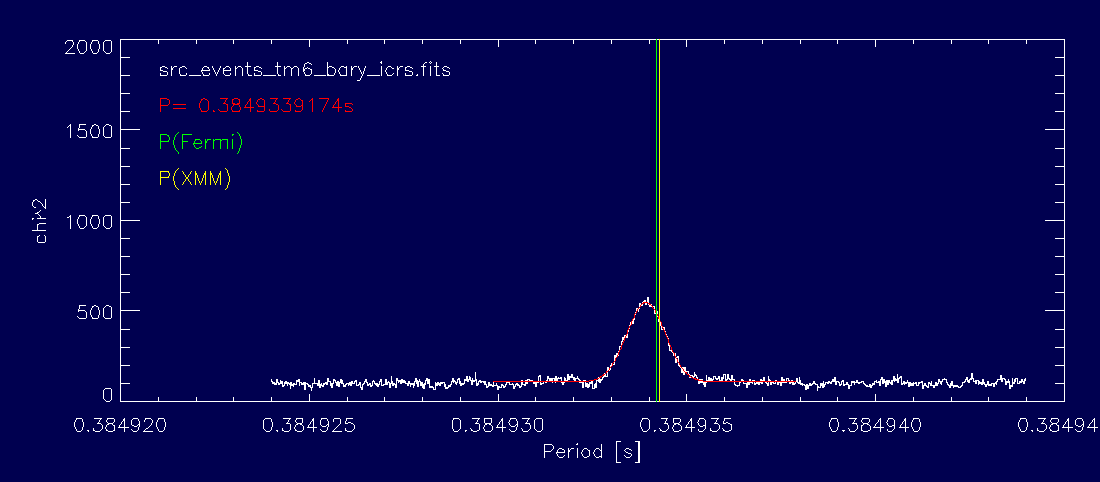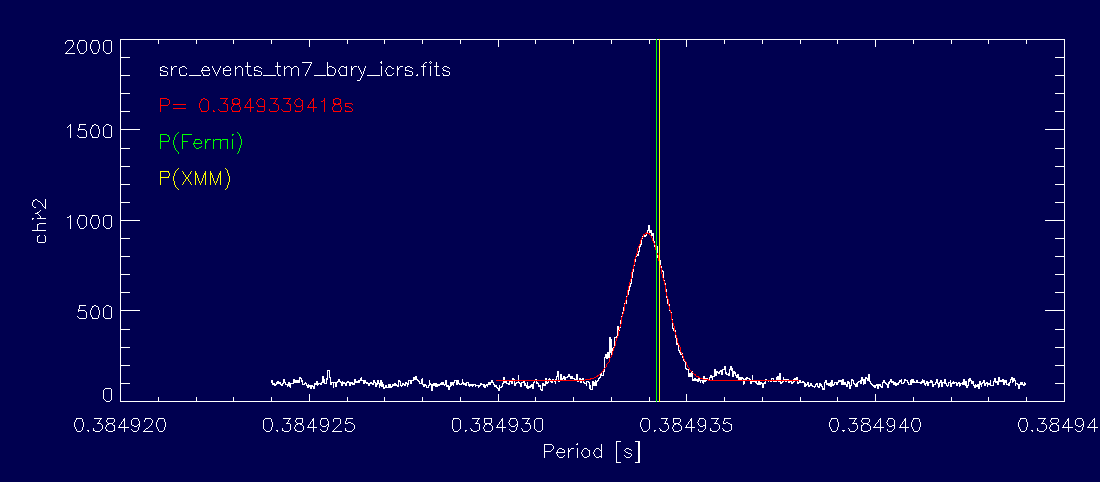|
Size: 6630
Comment:
|
Size: 6649
Comment:
|
| Deletions are marked like this. | Additions are marked like this. |
| Line 21: | Line 21: |
| the HEASOFT ''barycen'' task can be used. We have converted the orbit file ''omnia_orbit_october_2019.log'' into a FITS file with the format required by ''barycen''. |
the HEASOFT ''barycen'' task can be used. We have converted the orbit file ''omnia_orbit_october_2019.log'', provided by NPOL, into a FITS file with the format required by ''barycen''. |
PSR 0656+14 timing analysis
G. Lamer with contributions by J. Kurpas, A. Schwope, and I. Traulsen (AIP).
The pulsar PSR 0656+14 was observed on 14/15-Oct-2019 for 115 ksec. The cameras of all telescopes TM1-TM7 observed with the filter wheel in "FILTER" position. However, it turned out that the data are incomplete during an electronics issue and are only of limited use for this analysis. A simultaneous observation of PSR 0656+14 was carried out with XMM-Newton.
The pulsations of PSR 0656+14 have a period of P=0.385 sec and have beeen observed at radio frequencies, in X-rays, and Gamma-rays.
Barycentric correction:
In order to analyse the pulsations of PSR 0656+14 a barycentric correction of the event tinmes needs to be applied. Until the eSASS task with this functionality is implemented, a workaround using the HEASOFT barycen task can be used. We have converted the orbit file omnia_orbit_october_2019.log, provided by NPOL, into a FITS file with the format required by barycen.
October 2019 orbit file: orbit_october_2019_scc.fits
Also the headers of the event files to be corrected need to be modified:
keyword RADECSYS="ICRS" keyword TIMEREF="LOCAL" keyword TIMESYS="TT"
Since barycen only recognizes the extension name "GTI", the name of the GTI extension needs to changed to "GTI" before calling barycen and then changed back to its original name.
The barycen task was called with the following command line:
- barycen infile="ICRS"
keyword TIMEREF="LOCAL" keyword TIMESYS="TT"
Since barycen only recognizes the extension name "GTI", the name of the GTI extension needs to changed to "GTI" before calling barycen and then changed back to its original name.
The barycen task was called with the following command line:
barycen infile=src_events_tm2.fits \
outfile=src_events_tm2_bary_icrs.fits \
rbfile=orbit_october_2019_scc.fits \
ra=104.9507468 \
dec=14.23963084 \
orbext="ORBIT" \
orbform="COMPONENTS" \
orbcol="X,Y,Z,VX,VY,VY,VZ" \
startcol="START" \
stopcol="STOP" \
refframe="ICRS" \
orbinterp="WEIGHTED" \
timecol="TIME" \
chatter=3 \
clobber=yes \
debug=yes
Example bash script: run_bary.sh
Before and after barycentric correction a chi^2 period search was applied to the data and a Gaussian was fit to the chi^2 peak near the published pulse period. The XMM-Newton data were reduced and barycenter corrected using the XMMSAS package and the pulse period was determined, details will be described elsewhere.
Results:
eROSITA periods before and after barycentric correction (see Figures periods below)
Camera |
P before correction [s] |
P after bary correction [s] |
TM1 |
0.38489567005 |
0.384933872 |
TM2 |
0.38489572213 |
0.384933945 |
TM3 |
0.38489567927 |
0.384933908 |
TM4 |
0.38489568964 |
0.384933919 |
TM5 |
0.38489572062 |
0.384933948 |
TM6 |
0.38489568900 |
0.384933918 |
TM7 |
0.38489571696 |
0.384933942 |
eRO(TM2-7) |
0.38489570294 |
0.384933930 |
SD(TM2-7) |
|
1.63234E-08 |
XMM |
- |
0.38493427 |
Ref* |
- |
0.3849341856 |
XMM-Ref |
|
8.94070E-08 |
eRO-Ref |
|
-2.68221E-07 |
eRO-XMM |
|
-3.57628e-07 |
* Based on Fermi LAT data (Ray et al. 2011), corrected for spin down to 14-Oct-2019
Assuming the standard deviation of the TM2-TM7 period measurements as error estimate, the discrepancy between the eROSITA measuments versus the reference by XMM-Newton or Fermi is clearly significant. The relative discrepancy of the eROSITA measurement vs. the Fermi reference is
(P_ero-P_fermi)/P_fermi = -6.970E-7
The following sources of errors need to be considered:
- SRG clock drift: no calibration data are currently available for October 2019. However, the clock drift is estimated to be of the order 10 ms/day corresponding to a relative drift of 1.15741e-07. This is not sufficient to account for the observed discrepancy.
- Inaccuracy of the orbit file, the observed discrepancy would correspond to a velocity difference of ~200 m/s
Other inaccuracies in the barycentric correction (barycen task, wrong assumptions on time/reference frames etc.), suggestions or comparisons with other codes are welcome.
Time lags
We calculated folded pulse profiles with start time T0_scc=6.243790548902941D8 and P=0.38493392969366 (see Figures pulse profiles below)
When comparing the folded pulse profiles the following offsets in event times were detected (assuming that the phase shifts are caused by the known +- 1sec time jumps):
Camera |
Time offset [s] 14-Oct-2019 |
Time offset [s] 15-Nov-2019 |
TM1 |
0.0 |
1.0 |
TM2 |
1.0 |
1.0 |
TM3 |
0.0 |
0.0 |
TM4 |
0.0 |
1.0 |
TM5 |
1.0 |
0.0 |
TM6 |
1.0 |
0.0 |
TM7 |
1.0 |
1.0 |
The offsets on 15-Nov were determined using positional offsets measured in the eFEDS scans. This indicates that time jumps have occurred in cameras TM1,TM4,TM5, and TM6 between 14-Oct and 15-Nov.
Figures periods
Chi^2 vs. period for barycenter corrected eROSITA data:
Figures pulse profiles
Folded pulse profiles with correction TIME=TIME-1s for cameras TM1,TM3,TM4:
